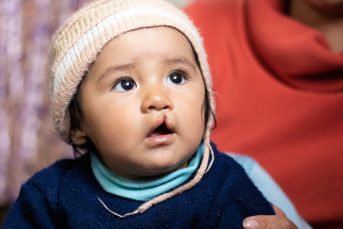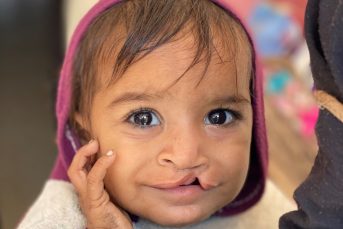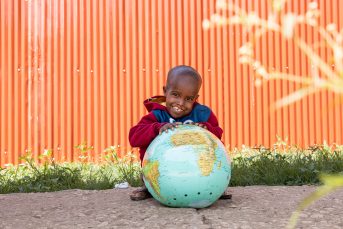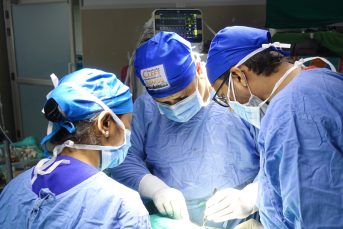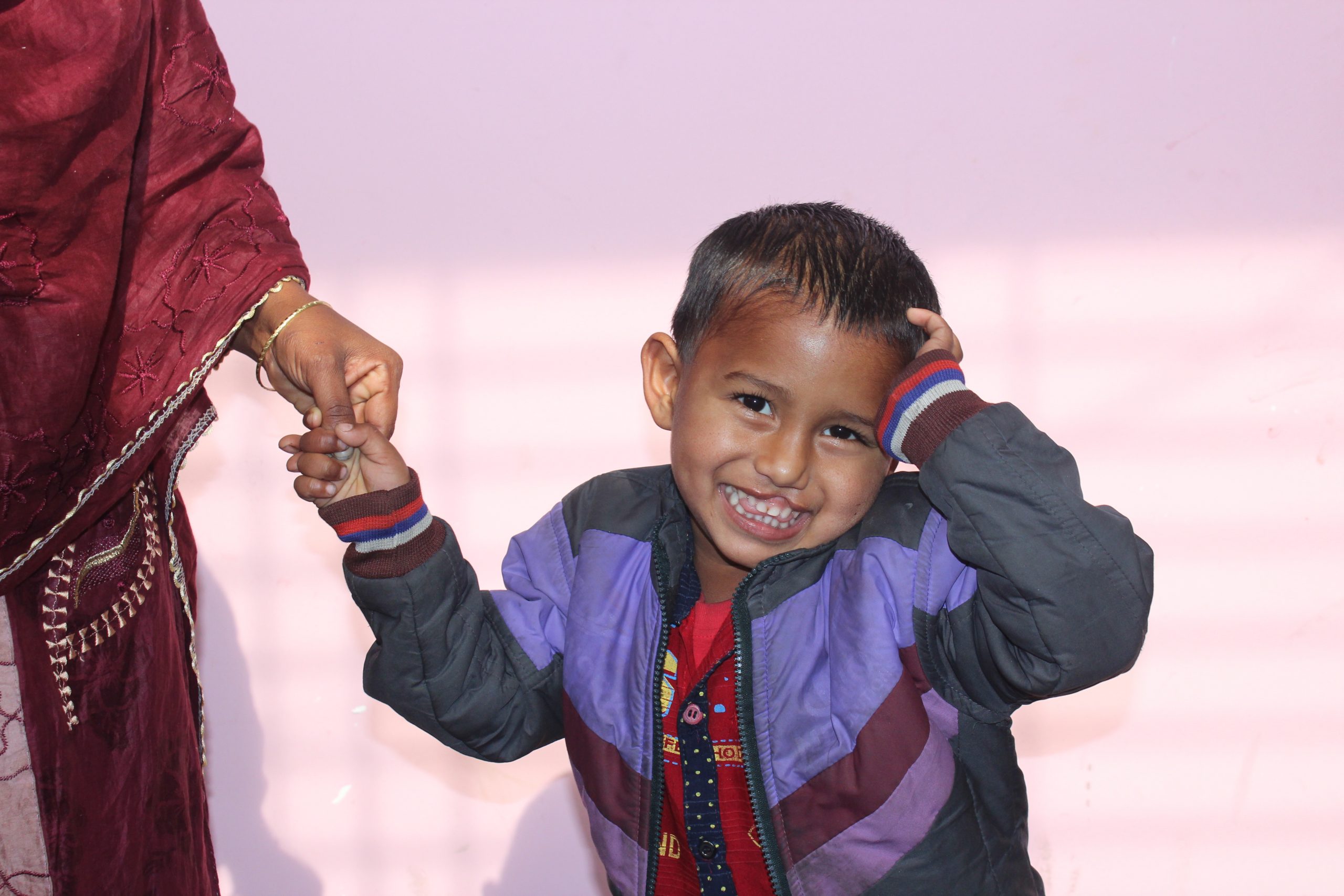
Our work: From 2002 until today
Effective help for children with cleft lip and/or palate – for more than 20 years. Since the founding our association in 2002, we have dedicated ourselves to a single mission, anchored in our statutes: helping children with cleft malformation in countries where such crucial medical treatment is not available - or at least not for all.
Since beginning this work, we have achieved a lot. As a German aid organization, we are now internationally recognized, established and networked. Today, we are active in 17 countries and have over the years funded more than 80,000 surgeries and numerous follow-up therapies for cleft patients. Through steady educational work, we have been able to drive down the average age of our patients at the start of their treatment. Given that a surgery performed at the youngest possible age is crucial for the further development of children, this is a great success.
However, the general situation has not changed significantly: There is still no way to prevent cleft lip and palate. Some 700 million people were living in extreme poverty in 2022 (source: BMZ, based on calculations by the World Bank). Cleft children from these many economically poor families still have no lobby. The treatment of these children relies largely on aid organizations.
Our philosophy for implementing our statutory purpose – helping children with cleft malformation in developing and emerging countries – has proven itself over the past two decades. Then as now, the following concepts guide us in our work:
Local teams
Targeted education
Comprehensive cleft treatment
Continuous specialist training
Excerpt from our association statutes
1. the purpose of the association is the promotion of treatment for patients with cleft lip and palate as well as other craniofacial anomalies and defects, and their social integration, in developing and emerging countries..
2. the association exclusively and directly pursues charitable and benevolent purposes, including development aid in the field of health care.
3. the association's activities are not aimed at making a profit.
4. the statutory purpose is realized in particular via the following measures:
implementation and support of medical aid projects for the treatment of patients with cleft lip and/or palate [...] in close cooperation with local doctors and therapists
implementation and support of measures to improve awareness of and knowledge about cleft in the population
implementation and support of education and specialist training measures […]
professional, organizational and financial support for the development of appropriate technical infrastructure […]
Assumption of costs for free or low cost treatments for needy patients with cleft lip and/or palate [...] including aftercare, in particular for children and adolescents
strengthening the general interest in working on and with cleft patients
Local teams
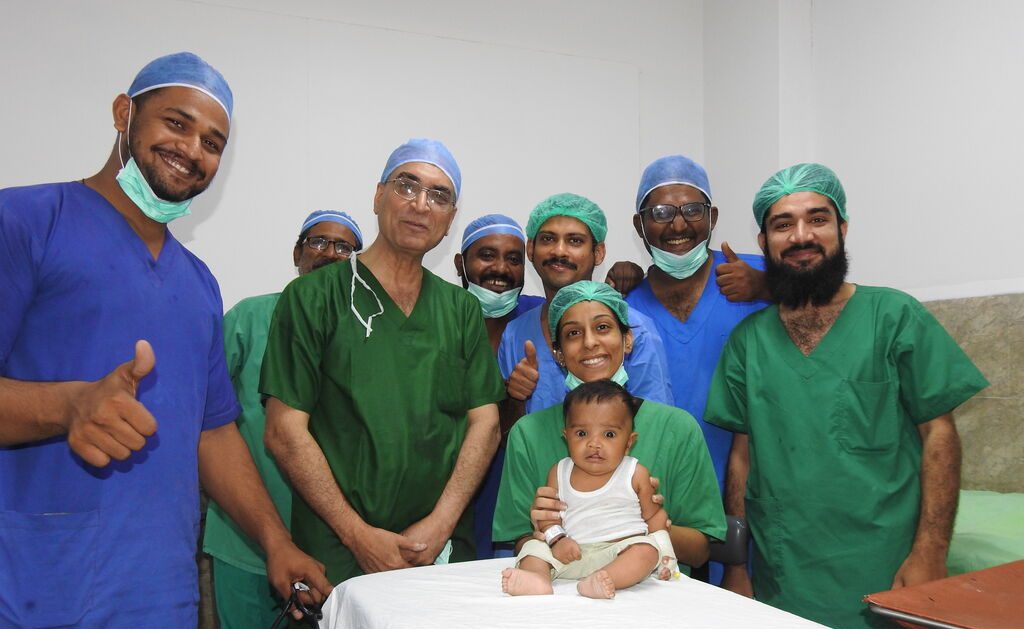 Prof. Dr. Ashraf Ganatra with team members.
Prof. Dr. Ashraf Ganatra with team members.Our help for children with cleft malformation has always been based on the use of local teams. We use locally based structures as the basis for efficient and sustainable development aid.
During the Coronavirus pandemic, this philosophy proved particularly effective. While many international aid organizations had to suspend their work due to travel restrictions, our local teams continued to be a dependable point of contact for cleft families.
Our projects are led by experienced surgeons. They are well networked and have contracts with local partner hospitals, which usually allow use of their infrastructure at far below the usual market price.
Our local teams know the needs and fears of the people best. They speak their language and are in regular contact with the families concerned - before and after the operation. Trustful contact with the parents is an essential prerequisite for optimal treatment success.
Education
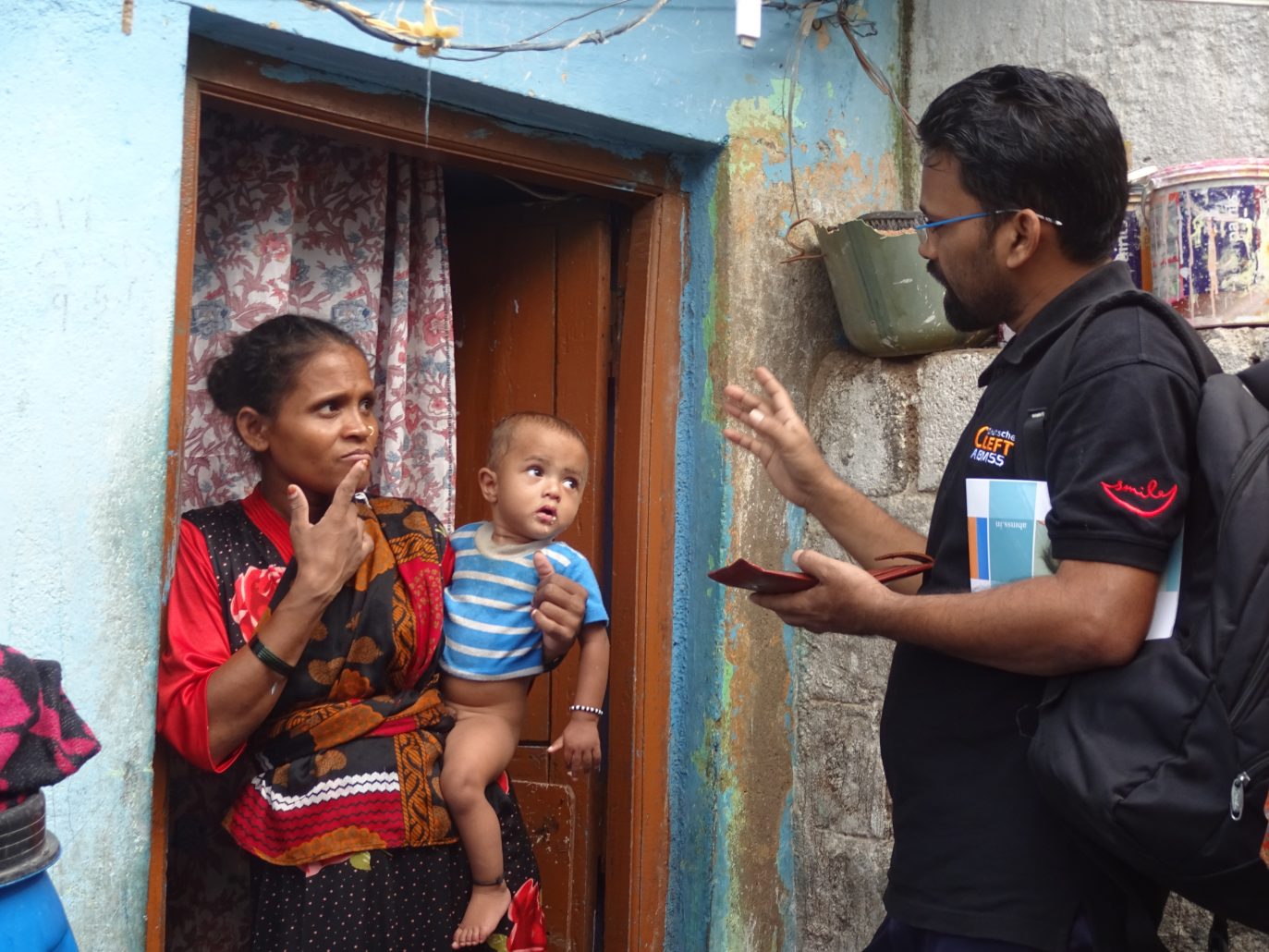 Personal contact with the people helps reduce shame and inhibitions that can stand in the way of accessing help.
Personal contact with the people helps reduce shame and inhibitions that can stand in the way of accessing help.Often, parents know nothing about the treatment options and causes of cleft lip and palate. The belief that the deformity is the punishment for one's sins is widespread. Often the mothers are blamed. Out of shame and ignorance, they hide their children.
Many families live in remote rural areas. In order to find our little patients, social workers visit these locations. They tell the parents about the causes of the malformation and the free treatment options available. The mothers are empowered and receive support, for example in feeding the children.
In line with the usual communication channels in the project countries, our local partners use various media, such as radio advertising, text message and social media campaigns, posters, etc., to draw attention to our help in order to achieve greater reach.
Comprehensive Care

Our goal is to provide children with access to necessary follow-up therapies beyond the surgery. Because what it means to grow up with a cleft lip and palate for those affected is often underestimated.
It is more than a visible blemish that causes children with cleft malformation to live in isolation. Depending on the type and severity of the malformation, there are also serious functional problems. Feeding is difficult, the children's speech development is impaired, and they suffer from hearing deficits. Addressing these problems requires specialized structures in the host countries, as well as the cooperation of the parents. We currently offer comprehensive care beyond the basic surgery to needy children with cleft lip and palate in India, Pakistan, Vietnam, Bolivia and Peru.
Education and training
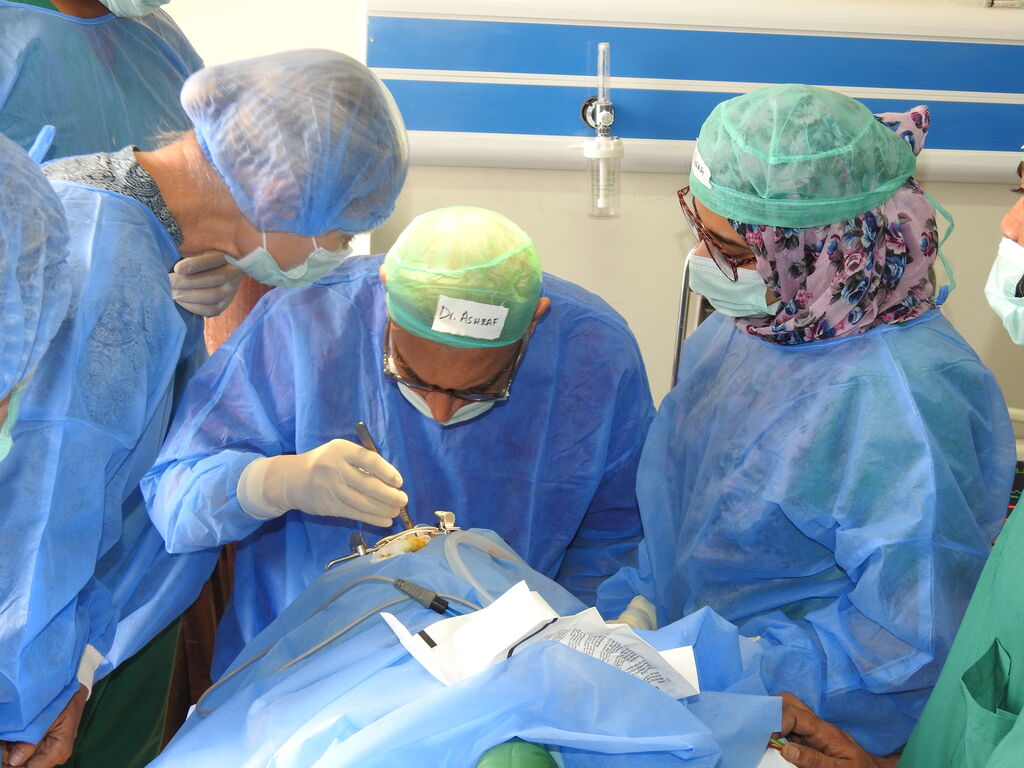 Prof. Ashraf at work, left: Sylvia Lüdtke-Haas of DCKH,right: Dr. Zaara
Prof. Ashraf at work, left: Sylvia Lüdtke-Haas of DCKH,right: Dr. ZaaraTo ensure a high quality of treatment, training and further education of our teams are of great importance. In doing so, we rely above all on the exchange and transfer of knowledge between our international project partners.
Experienced surgeons from our focus countries in India, Pakistan and Bangladesh train younger surgeons in cleft surgery. In Bangladesh, we have initiated a successful traineeship program that recently graduated its first surgeon. Surgeons from Rwanda and Afghanistan were trained in India, a surgeon from Ethiopia in Pakistan. In Latin America, a regular professional exchange takes place between our project partners.
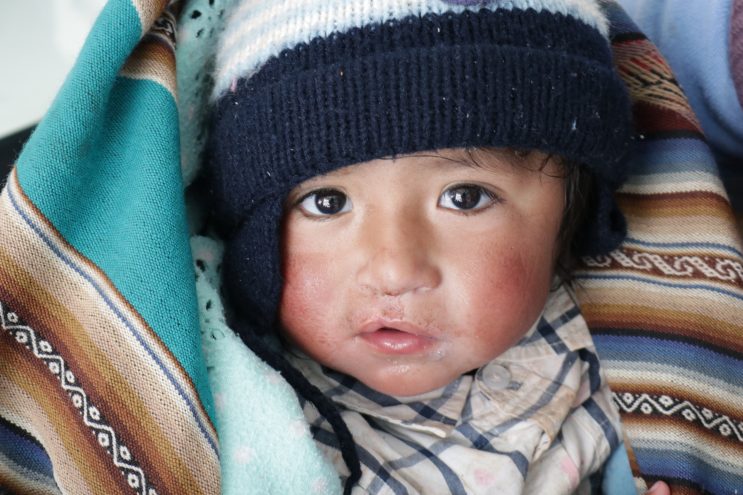
With a monthly donation of 25 euros, you finance a child's life-changing operation every year.
A small amount that makes a huge difference.
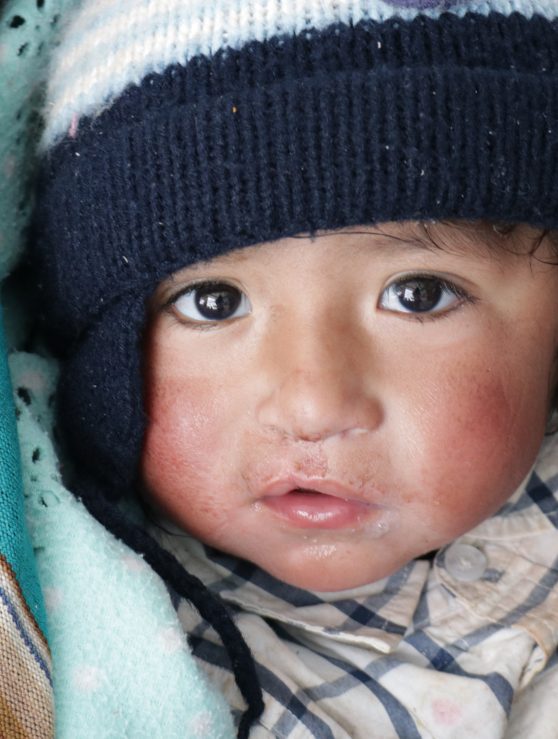
With a monthly donation of 25 euros, you finance a child's life-changing operation every year.
A small amount that makes a huge difference.

